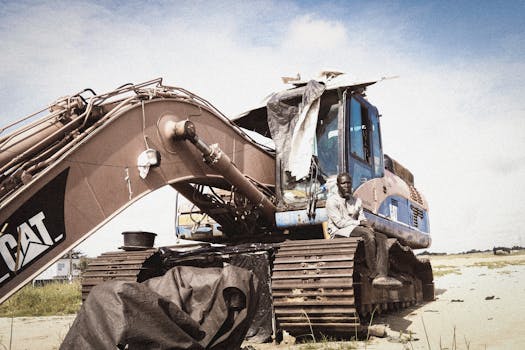Mapping the Fiber Landscape: Key Players and Projects Across Africa

Mapping the Fiber Landscape: Key Players and Projects Across Africa
Mapping the Fiber Landscape: Key Players and Projects Across Africa is crucial in understanding the current state of connectivity on the continent. Africa has been experiencing a significant surge in fiber optic infrastructure development, driven by key players and projects. The growth of fiber optic networks has been instrumental in bridging the digital divide, enabling faster and more reliable internet access, and fostering economic development across the continent.
Africa’s fiber landscape is characterized by a complex network of submarine cables, terrestrial fiber optic cables, and wireless networks. The continent’s rugged terrain, vast distances, and limited infrastructure have presented significant challenges to the development of fiber optic networks. However, despite these challenges, Africa has made significant strides in recent years, with many countries investing heavily in fiber optic infrastructure.
The development of fiber optic infrastructure in Africa has been driven by a combination of factors, including government initiatives, private sector investment, and international cooperation. Many African governments have recognized the importance of fiber optic infrastructure in driving economic growth and have implemented policies to encourage investment in the sector. The private sector has also played a crucial role, with many companies investing in fiber optic infrastructure to meet the growing demand for data and internet services.
Fiber Optic Infrastructure Development in Africa
Fiber optic infrastructure development in Africa has been gaining momentum in recent years, with many countries experiencing significant growth in fiber optic networks. According to a report by the International Telecommunication Union (ITU), the number of fiber optic subscriptions in Africa increased from 1.3 million in 2010 to 13.4 million in 2020. This growth has been driven by a combination of factors, including government initiatives, private sector investment, and international cooperation.
One of the key drivers of fiber optic infrastructure development in Africa has been the growth of submarine cables. Submarine cables have played a critical role in connecting Africa to the rest of the world, enabling faster and more reliable internet access. Many submarine cables have been laid in recent years, including the SEACOM cable, which connects South Africa to Europe and Asia, and the Main One cable, which connects West Africa to Europe.
Terrestrial fiber optic cables have also been instrumental in developing fiber optic infrastructure in Africa. Many countries have invested in terrestrial fiber optic cables to connect cities and towns, enabling faster and more reliable internet access. For example, the East African Backbone (EABB) is a 4,500-kilometer fiber optic cable that connects Kenya, Tanzania, and Uganda, providing high-speed internet access to the region.
Key Players in Africa’s Fiber Landscape
There are many key players involved in Africa’s fiber landscape, including governments, private sector companies, and international organizations. Governments have played a crucial role in promoting fiber optic infrastructure development, implementing policies to encourage investment in the sector. Private sector companies have also been instrumental, investing in fiber optic infrastructure to meet the growing demand for data and internet services.
Some of the key players in Africa’s fiber landscape include MTN, Vodacom, and Liquid Telecom. These companies have invested heavily in fiber optic infrastructure, developing extensive networks across the continent. International organizations, such as the ITU and the African Union, have also played a critical role, providing technical assistance and funding to support fiber optic infrastructure development.
In addition to these key players, there are many other stakeholders involved in Africa’s fiber landscape, including internet service providers, data centers, and cloud computing companies. These stakeholders have been instrumental in driving demand for fiber optic infrastructure, enabling faster and more reliable internet access across the continent.
Projects and Initiatives
There are many projects and initiatives underway to develop fiber optic infrastructure in Africa. One of the most significant initiatives is the African Union’s (AU) Continental Agenda 2063, which aims to develop a comprehensive and integrated African broadband network. The initiative seeks to connect all African countries to high-speed internet by 2030, enabling faster and more reliable internet access across the continent.
Another significant initiative is the Smart Africa Alliance, which aims to promote the use of information and communication technologies (ICTs) to drive economic development across the continent. The alliance has been instrumental in promoting fiber optic infrastructure development, providing technical assistance and funding to support the growth of fiber optic networks.
In addition to these initiatives, there are many other projects underway to develop fiber optic infrastructure in Africa. For example, the African Development Bank (AfDB) has launched a $1.5 billion initiative to support the development of fiber optic infrastructure in Africa. The initiative seeks to connect all African countries to high-speed internet by 2030, enabling faster and more reliable internet access across the continent.
Conclusion
In conclusion, Mapping the Fiber Landscape: Key Players and Projects Across Africa is crucial in understanding the current state of connectivity on the continent. The growth of fiber optic infrastructure has been instrumental in bridging the digital divide, enabling faster and more reliable internet access, and fostering economic development across the continent. While there are many challenges to be addressed, the future of fiber optic infrastructure in Africa looks promising, with many key players and projects driving growth and development in the sector.

